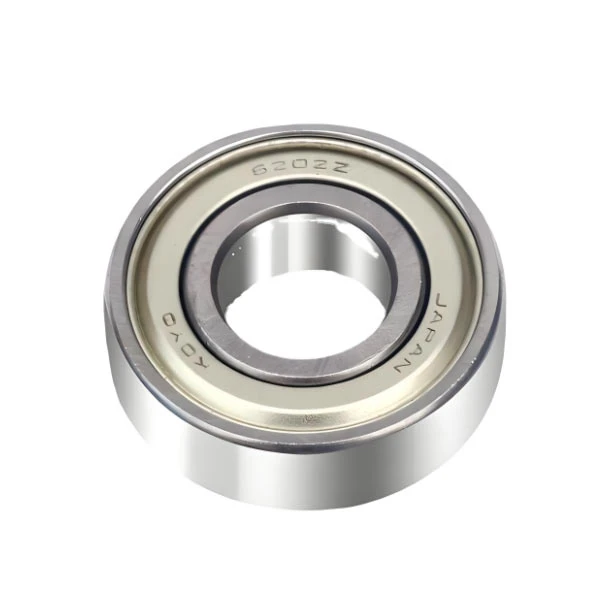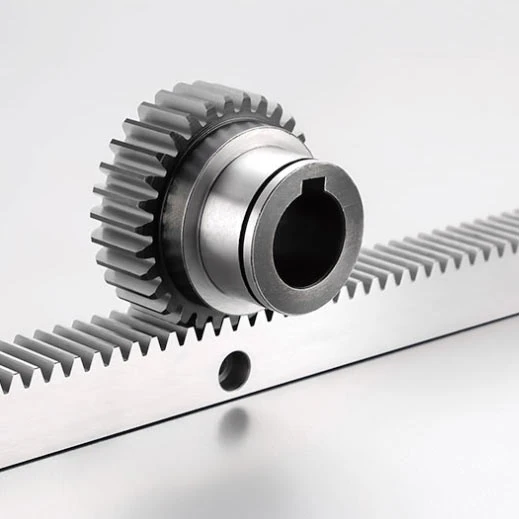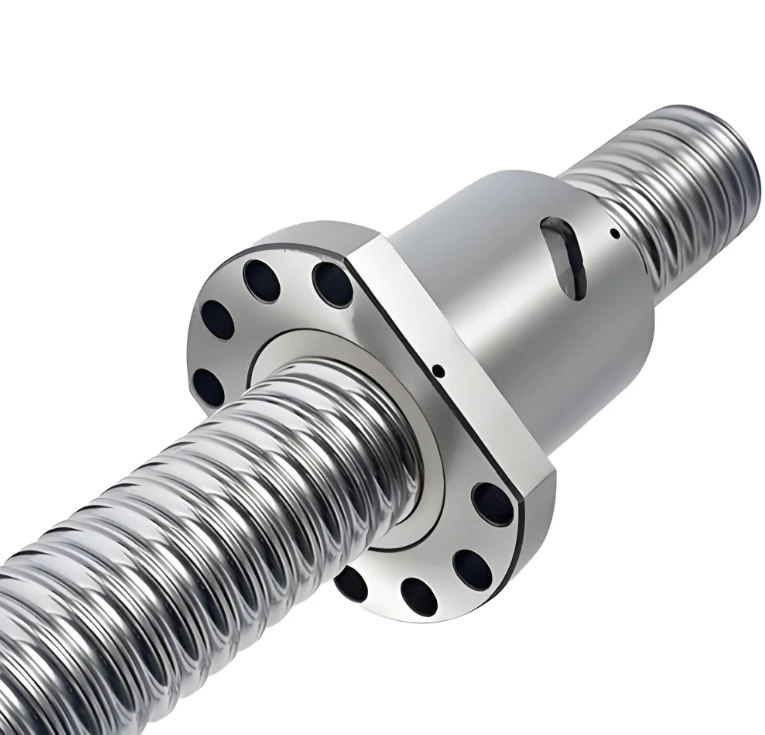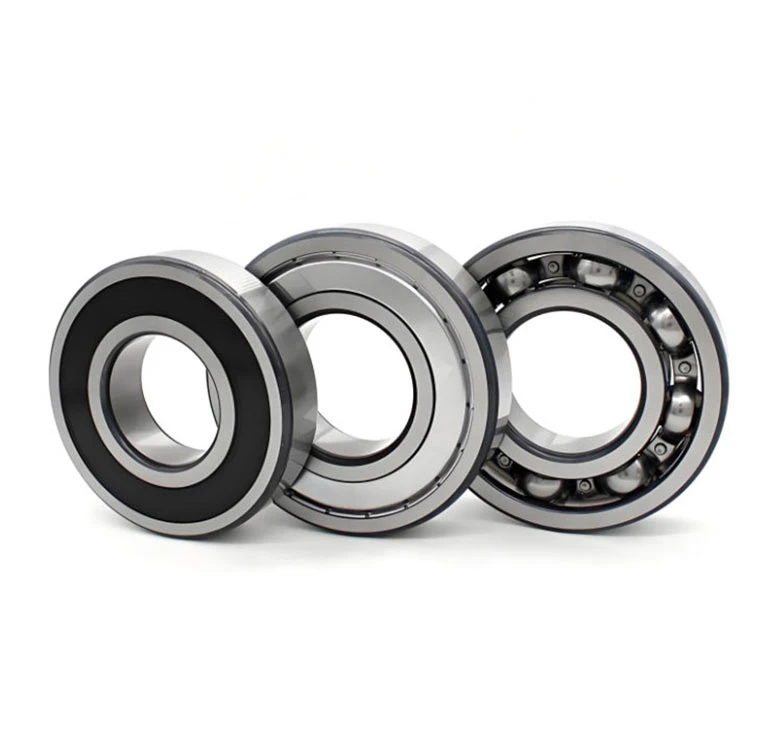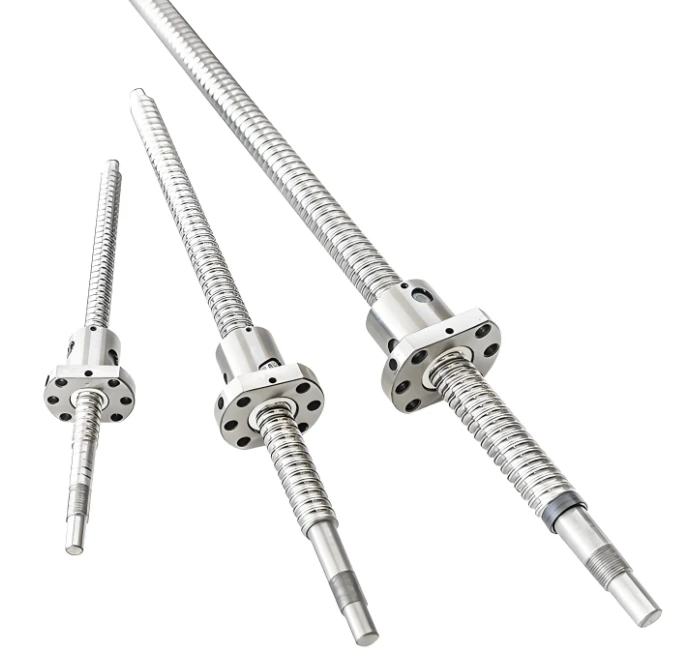The Evolution of Precision: Understanding Ball Screws in Modern Industry
In the realm of industrial automation and precision machinery, the ball screw stands as a cornerstone component, pivotal for converting rotary motion into linear motion with exceptional efficiency and accuracy. Its design, involving a threaded shaft and a nut equipped with recirculating balls, minimizes friction and backlash, distinguishing it from traditional lead screws. This fundamental difference enables high-speed operation, superior positional accuracy, and a significantly extended service life, making it indispensable across a myriad of demanding applications. The global market for these critical components continues to experience robust growth, driven by an ever-increasing demand for automation, enhanced manufacturing precision, and the relentless pursuit of energy efficiency in industrial processes. Emerging trends indicate a strong push towards miniaturization, higher load capacities, and the integration of smart monitoring capabilities, all contributing to a dynamic and evolving landscape for linear motion solutions. The underlying demand stems from sectors that require precise, repeatable movements, where even a micron of deviation can impact product quality or operational safety.
The technological advancements within the ball screw industry are continuously pushing the boundaries of what's possible, influencing everything from sophisticated robotics to advanced medical devices. Key drivers for this expansion include the rapid adoption of Industry 4.0 principles, where interconnected systems and autonomous operations necessitate highly reliable and precise mechanical components. Furthermore, the burgeoning electric vehicle (EV) manufacturing sector, with its need for highly accurate assembly and testing equipment, presents a significant growth area. Energy conservation is another critical factor; the inherent low friction of ball and screw mechanisms translates directly into reduced power consumption for a given load, offering substantial operational cost savings and aligning with global sustainability initiatives. As industries strive for leaner, more efficient, and more environmentally responsible manufacturing practices, the role of high-performance ball screw systems becomes even more pronounced. This relentless innovation ensures that these precision components will remain at the forefront of linear motion technology, adapting to new challenges and enabling future industrial breakthroughs.
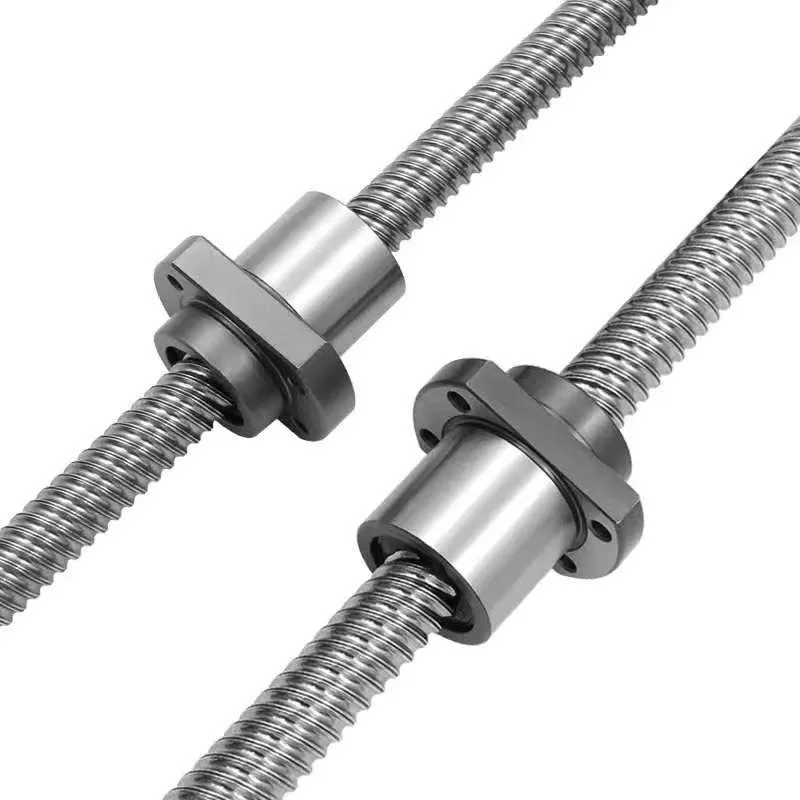
Deciphering the Mechanics: Ball Screw Fundamentals and Design Variations
At the heart of any effective ball screw system lies the ingenious mechanism that allows for highly efficient translation of rotational input into linear output. This mechanism primarily consists of three key elements: the threaded shaft (or screw), the ball nut, and the recirculating ball screw balls. Unlike conventional lead screws, where sliding friction between the nut and screw threads results in significant energy loss and wear, the ball screw and ball nut assembly utilizes precision-ground steel balls that roll in the helical grooves. This rolling contact dramatically reduces friction, typically achieving mechanical efficiencies upwards of 90%, a substantial improvement over the 20-50% efficiency of lead screws. The balls continuously recirculate through a return mechanism within the nut, ensuring a smooth, continuous operation. This design also significantly mitigates "stick-slip" phenomena, leading to more predictable and smoother motion even at low speeds. The accuracy of the linear movement is directly dependent on the precision of the threads and the quality of the balls, which are manufactured to extremely tight tolerances to minimize backlash and ensure consistent performance throughout the component's life cycle.
Ball screw designs vary primarily in their manufacturing method and thread profile, which influence their accuracy, load capacity, and cost. Rolled ball screws are produced by cold-forming or rolling the threads onto a shaft, offering a cost-effective solution for applications where moderate precision (e.g., C5, C7 accuracy classes) is acceptable, such as general industrial machinery or material handling. In contrast, ground ball screws, like the SFU1605 C3 Ground Ball Screw, undergo a precision grinding process after heat treatment. This meticulous process allows for much finer tolerances (e.g., C0, C1, C3 accuracy classes), resulting in superior precision, reduced backlash, and enhanced rigidity. The choice between rolled and ground screws hinges critically on the application's specific requirements for positional accuracy, repeatability, and stiffness. For instance, high-end CNC machine tools, semiconductor manufacturing equipment, and aerospace control surfaces demand the unparalleled precision offered by ground ball screws to achieve their operational objectives. Understanding these fundamental design variations is crucial for selecting the optimal linear motion component for any given engineering challenge, ensuring both performance and cost-effectiveness.
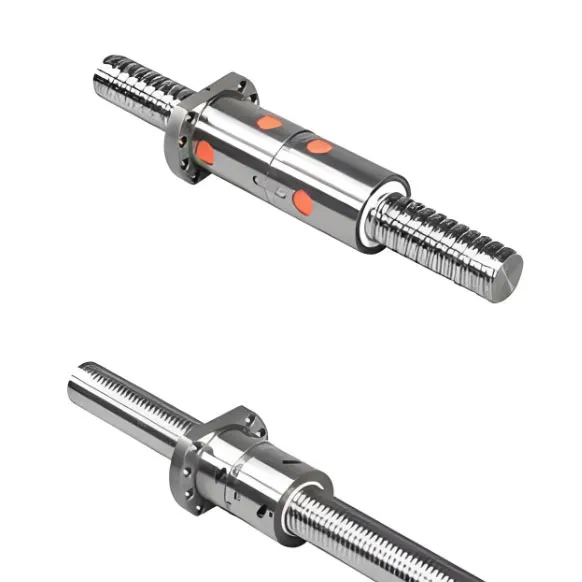
Precision Engineering: The Manufacturing Journey of SFU1605 C3 Ground Ball Screws
The production of a high-precision component such as the SFU1605 C3 Ground Ball Screw is a testament to advanced manufacturing capabilities, demanding meticulous attention to detail at every stage. The journey begins with the selection of premium raw materials, typically high-alloy steel, chosen for its superior strength, hardness, and fatigue resistance, crucial properties for the demanding operational environments ball screws encounter. This material undergoes a series of preparatory processes, including precision cutting and initial machining to achieve the rough form of the screw shaft. Following this, a critical phase involves heat treatment, such as hardening and tempering, which enhances the material's structural integrity and wear resistance. This step is precisely controlled to achieve the desired core hardness and surface hardness profiles, ensuring optimal performance and extended lifespan under dynamic loads. The subsequent grinding process is where the "ground" designation truly comes into play. Using highly specialized CNC grinding machines, the helical grooves are precisely formed and finished to achieve the stringent C3 accuracy class, meaning a lead accuracy of 0.008 mm/300mm. This precision grinding is vital for minimizing lead error and ensuring consistent, repeatable motion.
Post-grinding, the ball screw shafts undergo rigorous inspection processes to verify dimensional accuracy, surface finish, and thread profiles against international standards such as ISO and ANSI. Advanced metrology equipment, including laser interferometers and specialized coordinate measuring machines (CMMs), are employed to guarantee compliance with the C3 precision class. This meticulous inspection ensures that each ball screw meets the specified technical parameters and performs reliably in its intended application. Furthermore, the nuts are manufactured with equally high precision, often involving internal grinding of the raceways to match the ground screw shaft perfectly. The final assembly involves carefully loading the precision ball screw balls into the nut and integrating the return mechanism. The SFU1605 C3 Ground Ball Screw is particularly suited for industries requiring absolute precision and reliability, such as advanced automation, aerospace, medical devices, and high-precision machine tools. Its robust construction and manufacturing fidelity contribute to a long service life, typically measured in millions of cycles, and its design inherently offers advantages like high energy efficiency due to low friction and robust corrosion resistance through material selection and surface treatments, making it ideal for harsh environments like those found in petrochemical or metallurgical plants, and critical for precision in water supply and drainage systems requiring exact flow control.
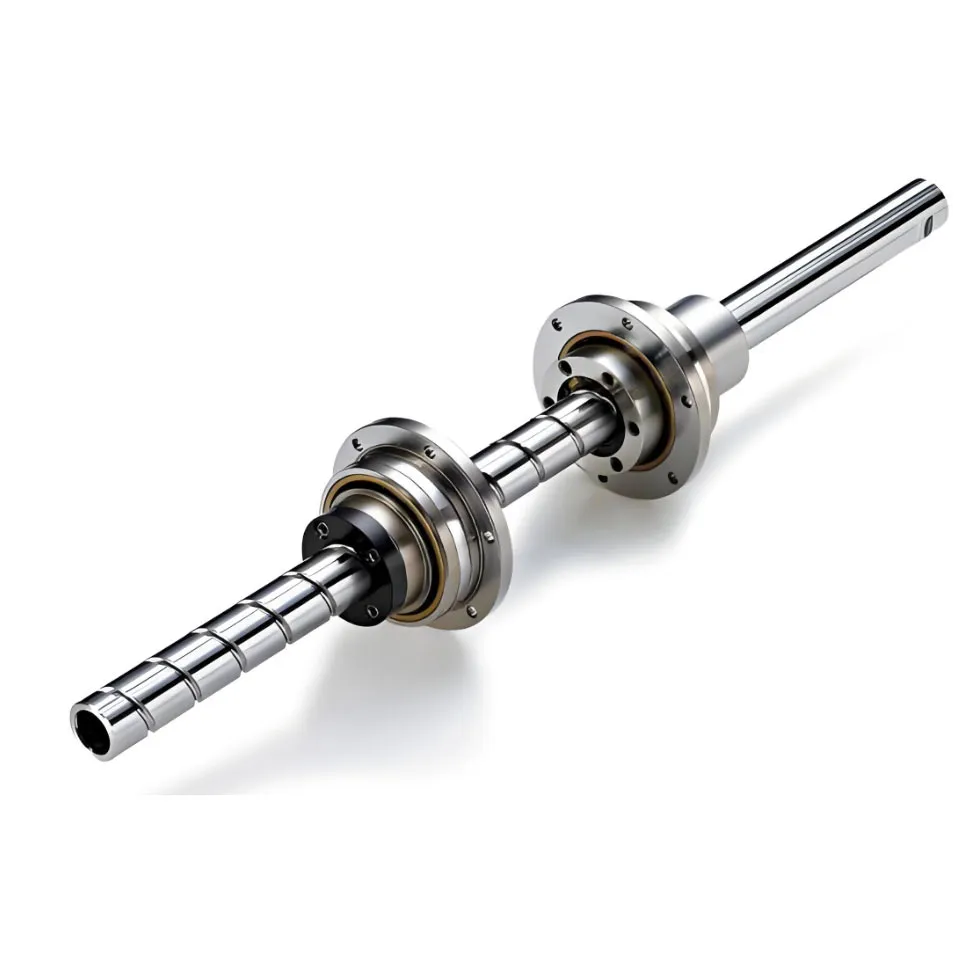
Critical Specifications: Technical Parameters and Performance Metrics
The performance and suitability of a ball screw for a specific application are defined by a comprehensive set of technical parameters. For the SFU1605 C3 Ground Ball Screw, key specifications include its nominal diameter (16mm), lead (5mm), and accuracy class (C3). The diameter refers to the outer diameter of the screw shaft, while the lead specifies the axial distance the nut travels for one complete revolution of the screw. A 5mm lead means fine-tuned control over linear movement, ideal for applications requiring high resolution. The C3 accuracy class, as previously noted, represents a high level of precision, indicating minimal lead error over a specified travel length, crucial for applications demanding exacting positional control. Beyond these fundamental dimensions, other critical parameters include the dynamic load rating (Ca) and static load rating (Co), which quantify the maximum allowable loads the ball screw can sustain during motion and at rest, respectively, while maintaining its expected service life. These ratings are crucial for preventing premature fatigue and ensuring long-term reliability. Furthermore, the rigidity of the ball screw system, encompassing both axial and torsional stiffness, dictates its resistance to deformation under load, directly impacting the system's ability to maintain precision during operation.
Understanding these parameters is essential for engineers and designers to select the appropriate ball screw for their specific requirements, ensuring optimal performance, longevity, and safety. Factors such as critical speed, which defines the maximum rotational speed before resonance issues arise, and the DN value, an indicator of the screw’s speed capability based on diameter and rotational velocity, also play a significant role in system design. The ball screw bearing support arrangement (fixed-fixed, fixed-supported, or simple-supported) also critically influences the overall system stiffness and critical speed, necessitating careful consideration during design. Below is a representative table outlining typical parameters for high-precision ground ball screws, including the SFU1605 C3, demonstrating the range of specifications available to meet diverse industrial demands. This data-driven approach allows for precise matching of components to operational needs, providing confidence in the system's performance and durability.
| Parameter | SFU1605 C3 (Example) | SFU2005 C5 (Example) | SFU2510 C7 (Example) |
|---|---|---|---|
| Nominal Diameter (mm) | 16 | 20 | 25 |
| Lead (mm) | 5 | 5 | 10 |
| Accuracy Class (JIS/ISO) | C3 (Ground) | C5 (Rolled/Ground) | C7 (Rolled) |
| Dynamic Load Rating (Ca, kN) | 7.5 - 9.5 | 11.0 - 13.0 | 16.0 - 19.0 |
| Static Load Rating (Co, kN) | 15.0 - 19.0 | 22.0 - 26.0 | 32.0 - 38.0 |
| Nut Type (Standard) | Flange Single Nut | Flange Single Nut | Flange Single Nut |
| Max. Length (mm, Varies) | 2000 - 3000 | 3000 - 4000 | 4000 - 6000 |
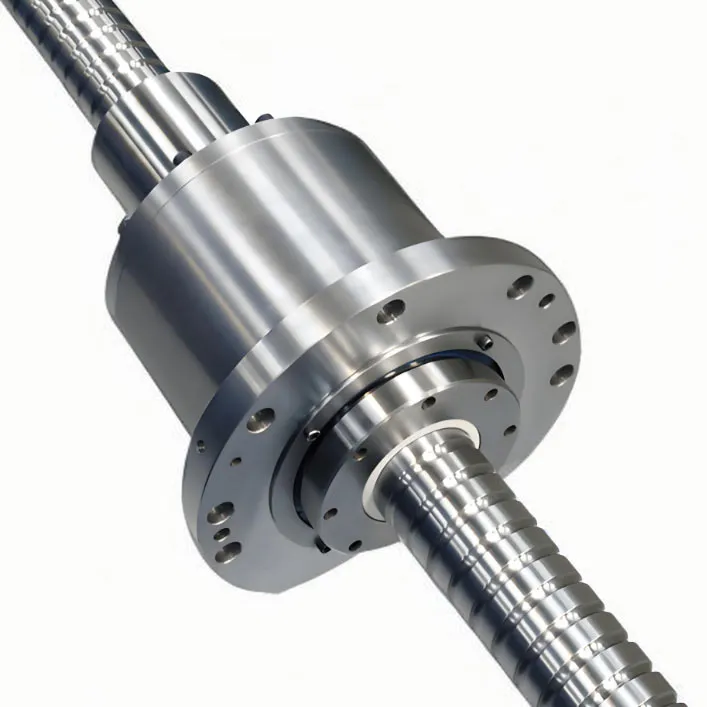
Versatile Applications and Unparalleled Advantages of Ball Screws
The inherent precision, efficiency, and durability of ball screw mechanisms make them indispensable across an extraordinarily diverse range of industrial and advanced technological applications. In the realm of high-precision machine tools, such as CNC machining centers, milling machines, and grinders, ball screws are the backbone of axial motion, enabling micron-level positioning accuracy essential for intricate component manufacturing. Their ability to deliver high rigidity and minimal backlash ensures consistent tool path execution, critical for achieving tight tolerances and superior surface finishes. Beyond traditional machining, they are integral to automation systems, including industrial robots, pick-and-place mechanisms, and automated assembly lines, where rapid, repeatable, and precise movements are paramount to increasing throughput and reducing manual labor. The medical sector also heavily relies on ball screw technology for applications ranging from sophisticated diagnostic equipment like MRI machines and CT scanners, which demand silent and extremely precise patient positioning, to surgical robots and laboratory automation systems. Similarly, in the aerospace industry, ball screws are found in flight control surfaces, landing gear actuation, and satellite positioning systems, where reliability and performance under extreme conditions are non-negotiable.
The advantages offered by ball screws extend far beyond mere mechanical function, delivering significant operational benefits. Their high mechanical efficiency, often exceeding 90%, translates directly into substantial energy savings, as less power is required to move a given load compared to less efficient linear motion devices. This contributes to lower operational costs and a reduced environmental footprint. Furthermore, the robust construction and precision manufacturing of ground ball screws, like the SFU1605 C3, ensure a long service life and high reliability, minimizing downtime and maintenance requirements. The low friction characteristic also generates less heat during operation, reducing the need for extensive cooling systems and extending the lifespan of surrounding components. For demanding environments, specialized materials and surface treatments can impart enhanced anti-corrosion properties, making ball screws suitable for use in industries such as petrochemical processing, where exposure to corrosive chemicals is common, or in marine and offshore applications. In the metallurgy sector, their ability to handle heavy loads with precision facilitates automated material handling and processing. Even in municipal infrastructure, such as water supply and drainage systems, ball screws can be found in automated valve actuation, providing precise and reliable control for fluid management, demonstrating their versatility and critical importance across a vast spectrum of industrial and commercial applications.
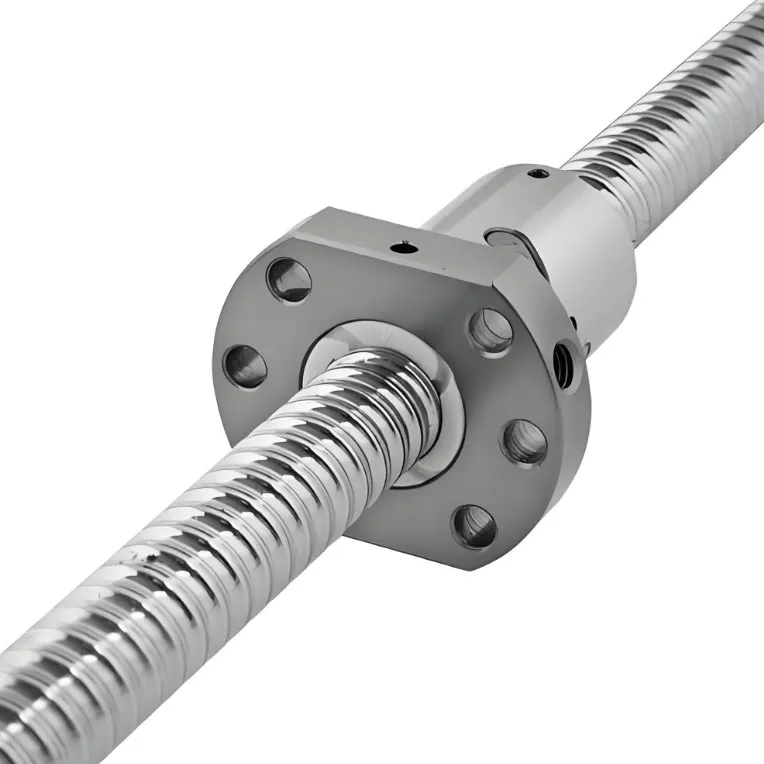
Navigating the Vendor Landscape and Custom Ball Screw Solutions
The global market for ball screws is populated by a variety of manufacturers, ranging from large multinational corporations to specialized boutique firms, each offering distinct product lines and expertise. Established players like ball screw thk are renowned for their high-quality products and extensive portfolio, setting benchmarks for precision and reliability in the industry. Other prominent manufacturers also contribute significantly to the market, providing a broad spectrum of solutions for various price points and performance requirements. When evaluating vendors, it is crucial for B2B decision-makers and technical personnel to consider not only the product specifications but also the manufacturer's reputation, quality control processes, and commitment to innovation. Key factors include adherence to international quality standards (e.g., ISO 9001), consistent product performance data, and the availability of technical support and documentation. Furthermore, the vendor's capacity for customization and their track record in delivering application-specific solutions often differentiate them in a competitive landscape. While standard ball screw products cover a wide range of needs, many specialized applications require components that deviate from off-the-shelf specifications.
This is where the demand for custom ball screw solutions becomes paramount. A custom approach allows engineers to precisely match the ball screw to the unique constraints and performance requirements of their specific system, optimizing aspects such as length, diameter, lead, nut configuration, and end-machining. For example, a specialized medical device might require a miniature ball screw with extremely fine lead and specific material properties for bio-compatibility, while a heavy-duty industrial press might need a large diameter ball screw with high load capacity and enhanced rigidity. Manufacturers capable of providing robust custom solutions typically possess advanced engineering capabilities, flexible manufacturing processes, and a deep understanding of diverse application challenges. They can work collaboratively with clients from initial concept to final production, ensuring the custom ball screw seamlessly integrates into the overall system design and performs optimally. This tailored approach not only maximizes efficiency and performance but can also lead to significant long-term cost savings by extending component lifespan and reducing maintenance needs, directly contributing to the overall success and reliability of the end product or system.
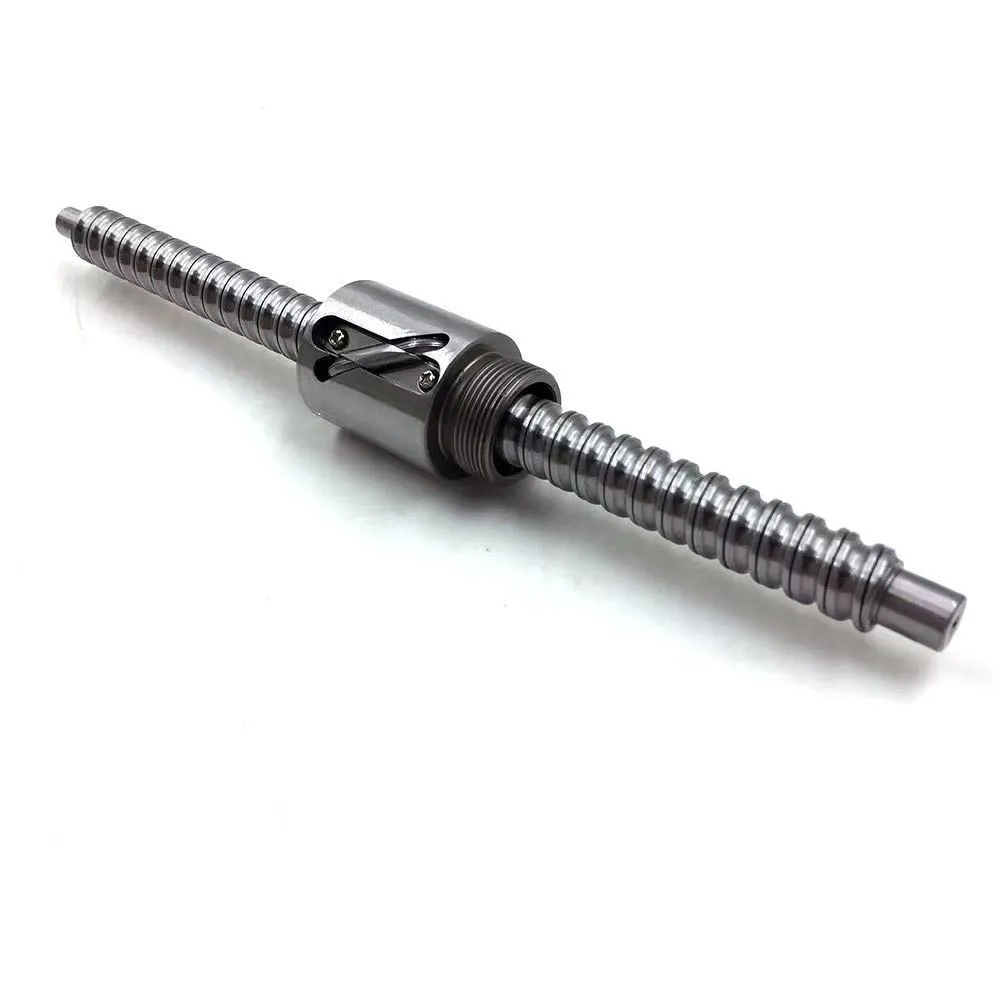
Optimizing System Performance: Ball Screw Bearing and Nut Integration
The performance of a ball screw system is not solely determined by the quality of the screw and nut themselves, but also significantly by the proper selection and integration of the ball screw bearing supports and the ball screw and ball nut assembly. Bearings play a crucial role in supporting the screw shaft, accommodating axial and radial loads, and ensuring smooth, low-friction rotation. Precision angular contact ball screw bearings are commonly used due to their high rigidity, excellent axial stiffness, and ability to handle high thrust loads. These bearings are typically preloaded to eliminate internal clearances, thereby maximizing stiffness and minimizing run-out, which is essential for maintaining the overall system's positional accuracy. The configuration of these bearings—whether fixed-fixed, fixed-supported, or simply supported—directly influences the critical speed, load capacity, and overall rigidity of the linear motion system. For instance, a fixed-fixed arrangement offers the highest rigidity and critical speed but requires more precise alignment during installation, making it ideal for high-speed, high-precision applications. Proper lubrication of both the ball screw and its supporting bearings is also paramount for maximizing service life and minimizing wear.
The integration of the ball screw and ball nut assembly into the broader mechanical system is another critical consideration that impacts overall performance. The nut's mounting interface, whether a flange type or cylindrical type, must be precisely machined to ensure concentricity and perpendicularity with the screw axis. Any misalignment can introduce unnecessary stresses, leading to increased friction, premature wear, and reduced accuracy. Backlash, while minimized by the recirculating ball design, can be further reduced or eliminated through various methods, such as preloading the nut assembly. This is often achieved using oversized balls, a double-nut system with a spacer, or a single nut with an axial preload mechanism. For applications requiring extreme precision and rigidity, a ground ball screw with a preloaded C3 accuracy nut assembly provides the optimal solution. The synergy between a high-quality ball screw, properly selected and installed ball screw bearings, and a precisely integrated nut assembly ensures that the entire linear motion system operates with maximum efficiency, accuracy, and longevity, delivering the reliable performance essential for critical industrial processes. This integrated approach ensures that the entire mechanical train functions as a cohesive unit, optimizing force transmission and minimizing energy losses.
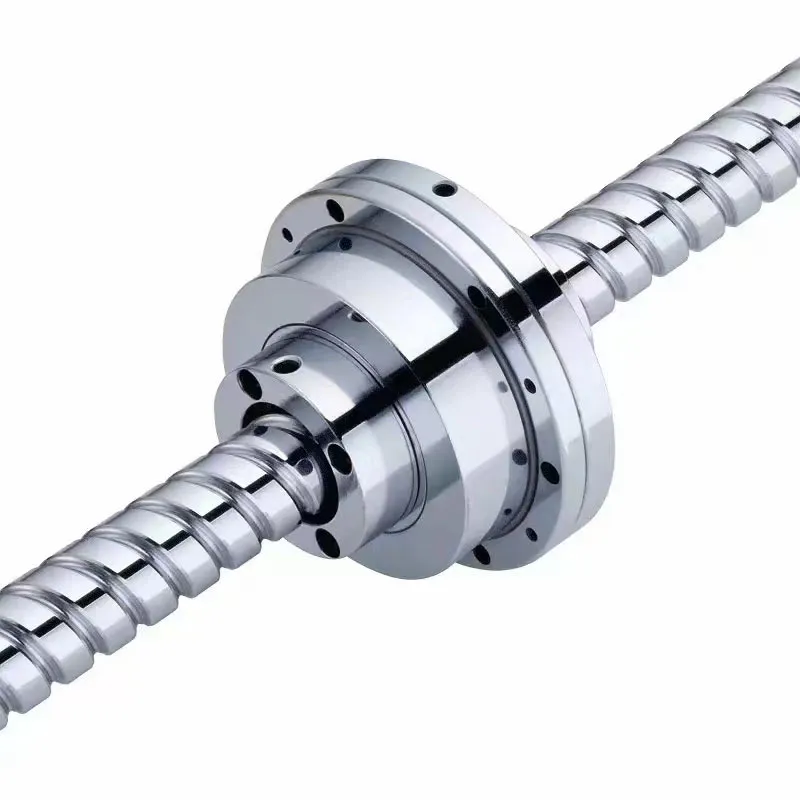
Real-World Impact: Case Studies and Customer Success with Precision Ball Screws
The tangible benefits of implementing high-quality ball screw solutions are best illustrated through real-world applications and customer success stories that highlight measurable improvements in efficiency, precision, and operational lifespan. In one notable instance, a leading manufacturer of large-scale 3D printers required a linear motion system capable of precise, rapid, and continuous movement for its print head. The existing lead screw system suffered from excessive wear, high friction, and unacceptable levels of backlash, leading to frequent maintenance and inconsistent print quality. By upgrading to a ground ball screw system, specifically opting for a solution with C5 accuracy, the manufacturer observed a dramatic reduction in energy consumption by over 25% due to the lower friction. Furthermore, the print quality improved significantly, with dimensional accuracies consistently within ±0.02mm, and maintenance intervals extended by over 300%. This upgrade not only enhanced product quality but also contributed to a substantial reduction in operational costs and increased machine uptime, demonstrating the direct impact of superior linear motion technology on production efficiency.
Another compelling case involved a company specializing in automated optical inspection (AOI) equipment for circuit boards. The precision of the scanning head's movement was critical to accurately detecting microscopic defects. Their initial setup utilized a less precise rolled ball screw, which introduced slight positional errors, leading to false positives and missed defects. Transitioning to a high-precision SFU1605 C3 Ground Ball Screw system enabled the AOI equipment to achieve unprecedented scanning accuracy, reducing false positives by 15% and improving defect detection rates by 10%. This enhancement directly translated into higher quality control for their clients and a stronger competitive edge for the AOI manufacturer. Such examples underscore the strategic importance of investing in high-grade ball screw technology. Our commitment extends beyond just providing products; we partner with our clients to understand their unique challenges, offering tailored solutions and expert technical support throughout the product lifecycle. This collaborative approach ensures that our ball screw solutions not only meet but exceed performance expectations, driving innovation and success across diverse industrial sectors. These case studies affirm the tangible advantages of precision ball screws in demanding industrial contexts, providing concrete evidence of their value.
Ensuring Trust and Support: FAQ, Warranty, and Customer Service
Frequently Asked Questions (FAQ)
-
Q1: What is the typical lead time for an SFU1605 C3 Ground Ball Screw?
A1: Standard SFU1605 C3 Ball Screws typically have a lead time of 2-4 weeks, depending on current production schedules and order volume. For custom lengths or specific end-machining, lead times may vary. We recommend contacting our sales team for precise delivery estimates tailored to your specific order requirements.
-
Q2: How do I choose the correct accuracy class for my application?
A2: The accuracy class (e.g., C3, C5, C7) depends on your application's precision requirements. C3 (0.008 mm/300mm) is ideal for high-precision machine tools and critical automation. C5 (0.018 mm/300mm) is suitable for general machine tools and industrial machinery. C7 (0.05 mm/300mm) is typically used for general industrial equipment and material handling. Our technical support team can assist you in selecting the optimal accuracy class based on your system's specific needs for positional accuracy and repeatability.
-
Q3: What maintenance is required for a Ball Screw?
A3: Regular lubrication is the most critical maintenance aspect for a ball screw. The type and frequency of lubrication depend on the operating conditions, load, and speed. It's also important to periodically check for proper alignment and ensure the absence of contaminants. We provide detailed maintenance guidelines with each product to help maximize its operational lifespan and maintain peak performance.
-
Q4: Are your Ball Screws compliant with international standards?
A4: Yes, all our ball screw products, including the SFU1605 C3 Ground Ball Screw, are manufactured and tested in strict accordance with relevant international standards, including ISO and JIS. Our manufacturing processes adhere to stringent quality control protocols, ensuring that our products meet or exceed the performance specifications and reliability expectations of our global clientele.
Warranty and Customer Support
We stand behind the quality and reliability of our SFU1605 C3 Ground Ball Screws and all our linear motion products. Each product is backed by a comprehensive 12-month warranty against manufacturing defects from the date of purchase. Our commitment to customer satisfaction extends beyond the sale, with a dedicated team of technical experts available to provide unparalleled customer support. Whether you require assistance with product selection, technical specifications, installation guidance, or troubleshooting, our specialists are ready to offer timely and informed solutions. We understand that reliability and support are paramount for B2B operations, and we strive to build long-term partnerships based on trust and consistent performance. Our service commitment ensures prompt responses to inquiries and efficient resolution of any technical challenges, guaranteeing optimal operational continuity for your critical applications.
Authoritative References and Further Reading
For those seeking deeper technical insights into ball screw technology and linear motion systems, the following authoritative sources provide comprehensive information and research:
- Mechanical Engineering Design, by Shigley, J. E., & Mischke, C. R. (Various editions). McGraw-Hill Education.
- Handbook of Mechanical Engineering (Dubbel), by Beitz, W., & Kuettner, K. (Various editions). Springer.
- Precision Machine Design, by Slocum, A. H. (1992). Society of Manufacturing Engineers.
- Journal of Manufacturing Science and Engineering, published by ASME.
- International Journal of Machine Tools and Manufacture, published by Elsevier.

